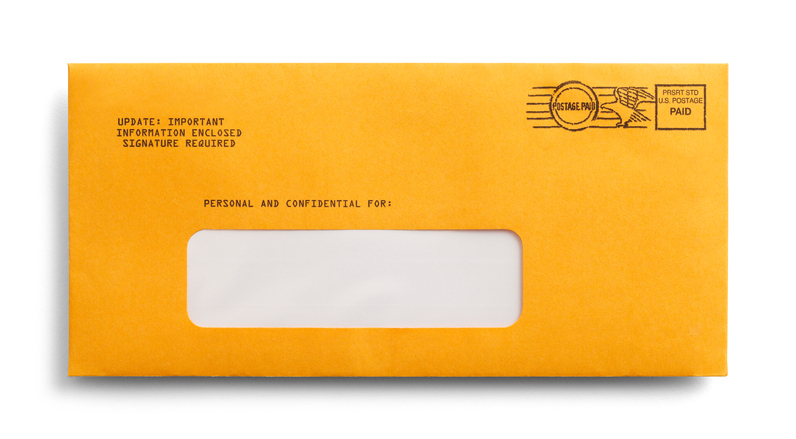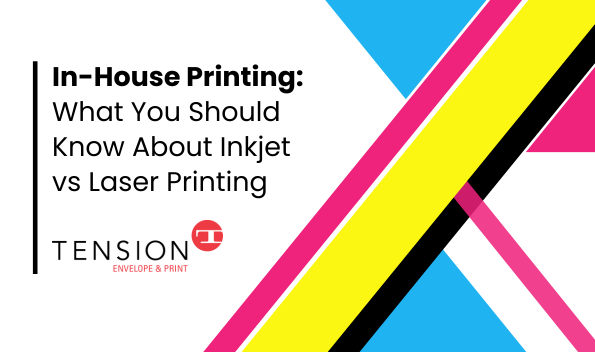Flexographic printing for envelopes has broad appeal. It’s cost effective and fast, while meeting the quality requirements of most envelope requests. It is the most common printing technique in the envelope industry.
Flexo principles are pretty simple. Thin, polymer plates are attached to rollers on the envelope machine. During the manufacturing process, the rollers pick up ink, spin and directly apply ink to paper. Because of how the polymer plates are created (with bumps and ridges rather than a smooth finish), the ink is applied in a series of small dots, one color at a time, one color per roller. The process is similar to using a stamp and ink pad.
Day to day, however, it is critical to know when is flexo the best choice and not only how it works. There are details that can be difficult to reproduce using flexo. The good news is that in many cases minor design changes or logo modifications can produce artwork that will print very well in flexography.
Yes, Yes It Can!
Flexo is a great choice for:
- Sans-serif fonts and simple images
- Spot-color or 4-color process printing that doesn’t require tight registration
- Full color wash using light and medium colors
For most transactional envelopes, those that are used to send bills, statements and policies, flexographic printing is your go-to printing method. The same goes for business reply envelopes (BREs) and customer reply envelopes (CREs).
Let’s Chat
Flexographic printing for envelopes has its limitations that can require modifications or, sometimes, an alternate printing method like lithography. Flexo can prove challenging when there are:
- Very fine fonts and details
- Fine lines within or around logos
- Type with small serifs
- Ornate or decorative typefaces
- Reverses of fine type, thin lines, or fine logos
- Screens, tints, vignettes, and halftones
- Human faces and flesh tones
- Vignettes and fades to zero
While some of these do not have to be completely avoided, be aware that additional prepress time and potential design modifications will be necessary. In many cases, lithographic printing, or offset, could be a better option. Direct mail envelopes use many of these elements, so it is important to know your budget and direct mailpiece requirements before you start the design process.
Yes, But…
It’s critical that you speak with your sales associate in these situations to better understand if flexo is an option. Tension has received awards from the Flexographic Technical Association year after year, which has pushed us to refine and improve our flexographic printing options:
- Bleeds – certain flexographic equipment can produce bleeds, but not all.
- Full, dark color solids – flexo is typically water based so the printing process may leave some inconsistent ink laydown.
- Faces and details – some equipment can replicate faces and fine details to meet certain standards, yet this is more the exception than the rule.
- Tight registration – some flexo machines, not all.
To avoid any major last-minute modifications, consider selecting your print method first and then creating your envelope design. And, as always, Tension Design Group and your sales associate are here to help.




